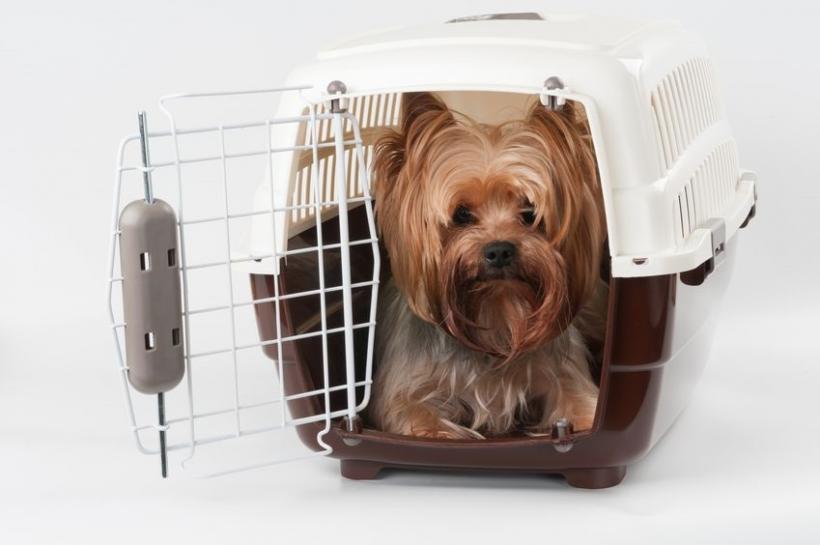
LAST UPDATED: August 19, 2024
Most Canadian snowbirds who own cats or dogs will of course want to bring them along when they go away for the winter each year. Whether you are travelling by air or by car, the rules for bringing a pet are essentially the same, but what’s involved is vastly different and requires a lot of planning and organization.
Read on for tips and guidelines to help you prepare for either mode of transport.
Requirements to bring your pets to the U.S.
Dogs
Effective as of August 1, 2024, the U.S. Centers for Disease Control and Prevention (CDC) introduced new rules for dogs entering the United States.
Under the new rules, the entry requirements vary greatly depending on whether you are bringing your dog to the U.S. from a “dog rabies-free or low-risk rabies country” vs. a “high-risk dog rabies country”.
Fortunately, Canada is considered a dog-rabies-free or low-risk rabies country, which means the entry requirements are far less onerous.
Under the revised rules, the following requirements must be met to bring dogs to the U.S. from Canada:
- Dogs must have spent the prior six months only in dog rabies-free or low-risk rabies countries.
- Dogs must appear healthy upon arrival.
- Dogs must be at least 6 months old at the time of entry to the U.S.
- Dogs must have a microchip that can be detected with a universal scanner to identify them.
- A CDC Dog Import Form must be submitted online prior to entering the U.S. and a receipt that the form has been submitted must be shown to U.S. border officials when entering the country.
The CDC Dog Import Form can be filled out on the day of travel, but it is recommended that the form be filled out a few days earlier to avoid potential issues.
Upon submission of the form, a receipt will be emailed to you that must be shown to airlines and border officials as a printed copy or by phone. The receipt will be good for travel into the U.S. for six months from the date of issuance, including multiple entries.
An official, detailed list from the CDC of entry requirements for dogs from rabies-free and low-risk rabies countries can be found here.
Dogs that have NOT spent the prior six months only in a dog rabies-free or low-risk rabies country will need to comply with stricter entry rules for dogs from high-risk rabies countries.
The CDC's list of countries that are considered high risk for rabies includes a number of destinations such as Cuba, the Dominican Republic, Thailand, and Vietnam. You can find a complete list of high-risk dog rabies countries here.
Cats
Rules for importing cats to the U.S. from Canada can be found here.
Cats may be required to be removed from their cat carrier and this can be problematic. Make sure you have gloves and the right clothing to deal with this.
Other Requirements
Before you travel, be sure to look at the websites of the departments that oversee the importation of pets (even though you are not importing your pet, you are subject to the same health requirements).
For travel to the U.S., you can find pet import rules at the following websites:
- U.S. Department of Agriculture (USDA) pet import rules
- CDC pet import rules
Additionally, some States have their own requirements for bringing in pets, in particular, Hawaii, which imposes a quarantine period so be sure to check the official website of the state you will be travelling to
Start well before your travel date to thoroughly investigate the requirements for your pet to travel.
Bringing your pets to countries other than the U.S. for the winter
Canadians who winter in countries other than the United States may still wish to bring their pets with them.
Mexico
You can find information on the requirements for bringing pets from Canada to Mexico here on the Government of Canada website.
Other Countries
If you are travelling to other countries, be sure to research the pet importation requirements for your destination before you go, as each country has its own regulations regarding bringing in cats and dogs - and in some cases, it may not even be permitted.
Requirements to bring your pets back to Canada
It’s important to remember that you will be subject to inspection upon returning to Canada if you are bringing in a pet.
The Canadian government agency that oversees the importation of animals is the Canadian Food Inspection Agency (CFIA). You can find rules and regulations about importing a pet to Canada on the CFIA website as well as information on travelling with pets on the Government of Canada website.
Additional information about bringing your pets back to Canada can be found on the Canada Border Services Agency (CBSA) website here.
If you have purchased your pet while in the U.S. or another country, different rules may apply so be sure to investigate the rules for importing an animal.
Tips for travelling with your pet by air
Travelling by air is in many ways a simpler option than by car. However, it is extremely important to check with each airline as their policies for carrying pets vary. This might influence your choice of airline, as some are more pet-friendly than others.
Before planning your trip, be sure to investigate the feasibility of transporting your pet on the dates you would like to travel.
Larger pets have to be carried in the cargo hold area of the aircraft and in approved animal crates. However, most airlines have blackout periods when they will not carry any pets whatsoever in the hold and this usually includes much of the summer months due to heat – it can also include the Christmas holidays
If your pet is small enough, it may be allowed in the passenger cabin in a pet carrier but must be kept under the seat, not all airlines allow this, and it can even vary by time of year. So be sure to ask all the right questions before you book your flights.
When you do book your flights, you must advise the airline at the same time that you will be travelling with a pet.
Airlines have strict rules about the type of carrier your pet can travel in, so be sure to ask about that too and make sure you have one that complies. The carrier should be large enough for your pet to comfortably lie down and have adequate padding for comfort. There are specific rules for carriers that are allowed in the cabin, so again, be sure to ask.
Many vets advise a mild tranquillizer for your pet before air travel. There are sprays for the carrier that relieve anxiety. Be sure to ask your vet about this and any other tips he or she may have.
Tips for travelling with your pet by car
Before you go: Travelling by car with your pet requires significant preparation and planning. First of all, you will want to source hotels or motels along your route that allow pets. You can find this out by checking the websites of the many chains that operate throughout the U.S. Make reservations well in advance so your pet is not in the car any longer than necessary when you arrive. Many hotels do apply a surcharge. You can put the litter box on some newspapers next to the hotel toilet.
Make sure you have sufficient food and treats for your pet’s journey and also check that you can import the food and treats you normally use. If you don't do this, you will have to stop once in the U.S. and purchase food there. Carry plenty of water and bowls for food and water. And be sure to take any medications your pet needs.
Make sure you have a crate or carrier for the journey. It is wise to line the carrier with a number of puppy training pads, in case of any accidents or car sickness. Other useful items are paper towels, rubber gloves, leashes, trash bags, plastic spoons for tinned food, and rug cleaner for the car or hotel room. For cats, you will want a litter box for the hotel and litter tools.
En route: In the car, it is better if your pet remains restrained in a carrier or cage, this is for your safety and theirs. If you do open the carrier, do it with the car doors closed, as you don’t want to risk your pet escaping outside the car.
Travelling through the southern U.S. even in the winter can still be very hot and if you are driving alone any rest stops should be kept to a minimum so your pet is not left in a hot car. Dogs can be taken out of the car on a leash for bathroom breaks and to eat and drink, however, cats are best kept in the car and fed and watered there, to prevent any chance of escape.
Choose the fastest and most direct route using interstate highways. This is not the time to take scenic, mountain routes. Many pets get carsick, especially on high and winding roads. The best thing for your pet is to get to your destination as soon as possible.
















